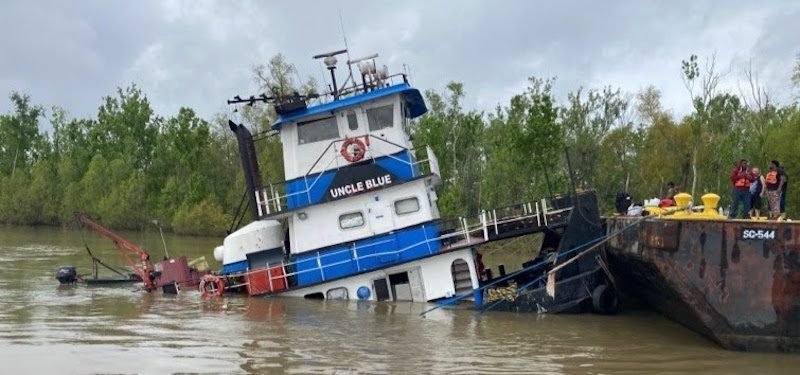The National Transportation Safety Board (NTSB) recently concluded its investigation into a tugboat’s partial sinking on the lower Mississippi River in Louisiana. The tugboat, named Uncle Blue, was transporting an empty vessel when it started taking on water. Investigators found extensive hull damage, leading to the ship flooding. The nearly 60-year-old vessel had multiple holes and double plating, indicating insufficient hull maintenance, which is crucial for ship safety.
NTSB investigators stressed the importance of proper hull maintenance, highlighting that double planking is not a suitable permanent repair solution for a vessel’s hull. They recommended shipowners replace damaged steel with new planking instead of covering it with double planking. Additionally, the investigation uncovered open pipes inside the hull that allowed progressive flooding of voids and the engine room. Proactive maintenance, including regular hull inspections, is essential for preventing flooding and ensuring hull integrity.
One of the factors contributing to the tugboat’s sinking was the absence of a high water bilge sensor in the lazarette, which delayed the detection of flooding. With the only sensor located at the front end of the engine room, early identification of flooding was hindered. While the incident did not result in injuries or pollution, it caused an estimated $500,000 in damages to the vessel. The full report on the flooding and partial sinking of tugboat Uncle Blue can be found on the NTSB’s website for detailed insights into the investigation.


















